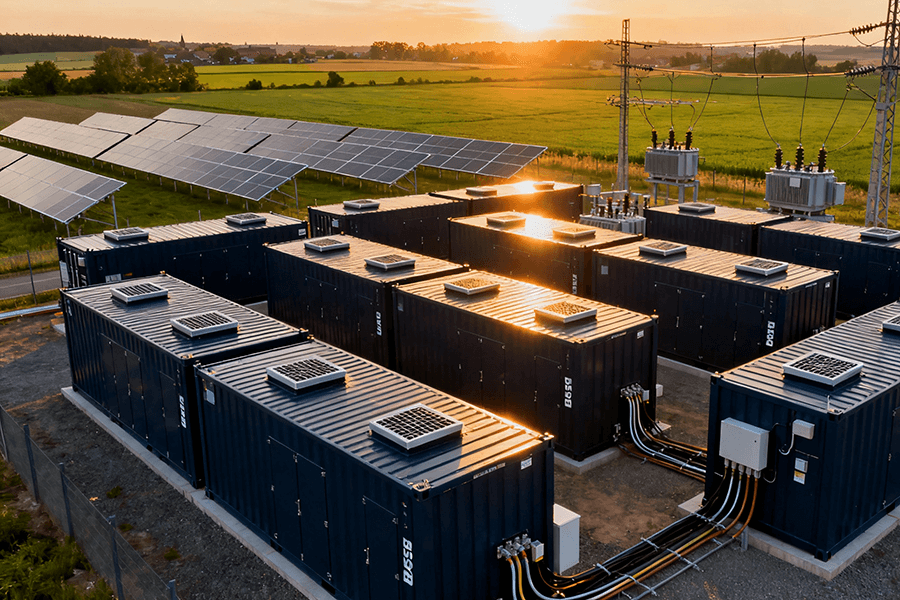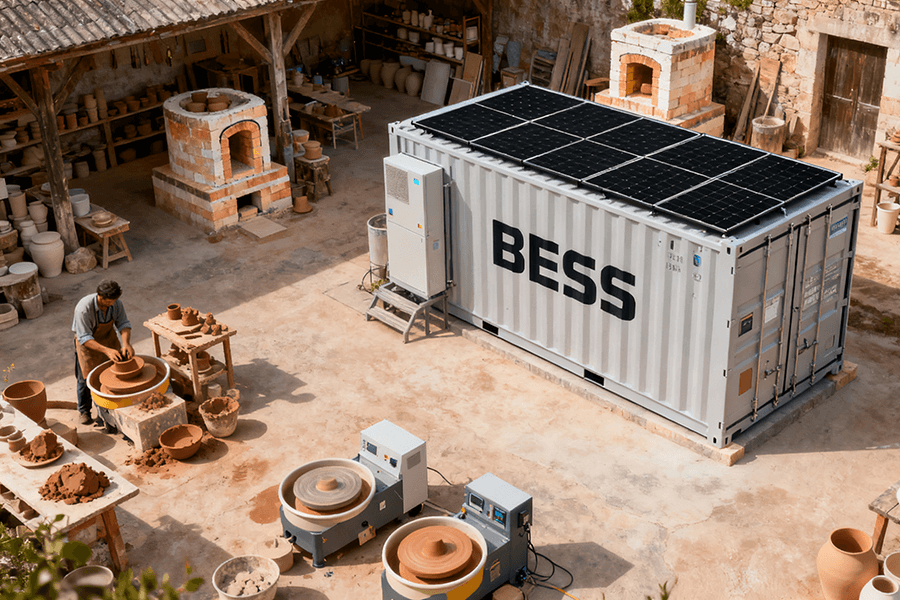
The EU’s Voltage Rulebook and Its Growing Rebels
Let’s start with the basics: the EU’s EN 50160 standard serves as the grid’s unyielding “behavior contract.” This regulation mandates that a staggering 95% of voltage readings must fall within the 216.2V to 253V range—a crucial benchmark that acts as an electrical speed limit, ensuring grid stability and protecting connected devices.
However, the rapid integration of distributed solar and wind power has introduced significant challenges to this equilibrium. These renewable sources, while essential for decarbonization, have proven to be unpredictable rule-breakers:
Midday Spikes
On sun-drenched mornings, an abundance of solar energy floods the grids. A notable example is Spain, which achieved 100% renewable generation just six days prior to its 2025 blackout. This influx of power often pushes voltages well past the 253V threshold, straining the grid infrastructure and risking equipment damage.
Afternoon Dips
Conversely, cloud cover or sudden wind drops can lead to significant power shortages. In rural areas, these fluctuations can cause voltages to plummet as low as 205V, far below the safe operating range. Such dips not only disrupt power supply but also pose a threat to the reliability of the grid.
Traditionally, capacitor banks have been the go-to solution for voltage regulation. However, these bulky, fixed units are ill-suited for the demands of modern grids. Their limitations are numerous:
- Lack of Adaptability: Capacitor banks struggle to respond to real-time fluctuations in power generation and demand, rendering them ineffective in managing the intermittent nature of renewables.
- High Maintenance: Requiring quarterly upkeep, these units demand significant resources and manpower, increasing operational costs.
- Limited Functionality: Capacitor banks offer only voltage regulation, failing to provide any additional benefits to the grid.
Enter BESS (Battery Energy Storage System) containers—the game-changers in grid management. These modular, high-speed systems are designed to handle multiple tasks simultaneously, much like a parent juggling work calls and household chores. Unlike capacitor banks, BESS containers offer a range of advantages:
- Dynamic Response: With the ability to rapidly adjust to changing grid conditions, BESS containers can effectively mitigate voltage spikes and dips, ensuring a stable power supply.
- Low Maintenance: Thanks to their advanced technology and robust design, BESS containers require minimal upkeep, reducing operational costs and downtime.
- Multifunctional Capabilities: In addition to voltage regulation, BESS containers can provide frequency regulation, peak shaving, and energy arbitrage, offering significant value to the grid.
As the EU acknowledges that 40% of its grid infrastructure is over 40 years old, BESS containers represent a crucial step towards modernizing and future-proofing the power grid. By integrating these innovative systems, Europe can enhance grid resilience, accommodate the growing share of renewables, and ensure a reliable and sustainable energy supply for years to come.
How BESS Containers Tame Voltage Chaos
BESS containers aren’t magic—they’re engineered to outreact and outperform. Here’s their playbook:
Fast Reactive Power: The 50ms Grid Lifeguard
Voltage swings in modern electrical grids occur in the blink of an eye—literally, within milliseconds. Yet, BESS (Battery Energy Storage System) containers are designed to respond even faster, leveraging cutting-edge power electronics to make split-second adjustments. Their secret weapon? Reactive power management, the often overlooked but crucial stabilizing force in electrical systems.
How It Works
BESS containers can modulate reactive power levels with astonishing speed, completing adjustments in as little as 50 milliseconds—a timeframe so rapid it outpaces the utterance of “EN 50160,” the European standard defining acceptable voltage characteristics. This agility allows them to act as the frontline defense against voltage anomalies, which can range from minor fluctuations to dangerous surges and dips.
Voltage Anomaly Response Matrix
The table below illustrates how BESS containers counteract different voltage events:
| Voltage Event | BESS Container Response | Outcome |
|---|---|---|
| Spike (>253V) | Absorbs excess reactive power, acting like a sponge to soak up the surplus electrical energy | Protects sensitive equipment in factories, data centers, and homes from voltage surges |
| Dip (<216.2V) | Instantly injects stored reactive power into the grid, bridging the energy gap | Prevents power outages and damage to electronics, ensuring continuous operation |
Case Study: Germany’s SUREVIVE Project
In 2025, Germany’s ambitious SUREVIVE initiative put BESS containers to the test. By deploying a massive 55MWh BESS installation, grid operators achieved a remarkable 70% reduction in voltage fluctuations. This not only brought the grid back into strict compliance with EN 50160 but also transformed what was once a volatile electrical environment into a stable, reliable power supply—akin to trading a wild rollercoaster ride for a serene lazy river cruise.
Rural Grid Rescue: Fixing “End-of-Line” Blues
In the vast landscapes of Eastern Europe, rural communities often face a unique challenge: the tyranny of distance. Long, winding power lines stretch across fields and forests, and by the time electricity reaches remote villages and farms, voltage levels have dropped significantly. This “end-of-line” voltage sag isn’t just an inconvenience—it’s a costly problem that disrupts daily life and business operations.
The Impact on Rural Communities
- Equipment Damage: Fluctuating voltages can fry sensitive agricultural equipment, from cold storage units that preserve harvests to irrigation pumps critical for crop growth.
- Economic Losses: Farmers in the region report annual losses exceeding €10,000 due to equipment breakdowns and premature failures.
- Quality of Life: Inadequate power supply affects everything from lighting to heating, impacting the overall quality of life for rural residents.
BESS Containers to the Rescue
BESS containers have emerged as a game-changing solution for these struggling rural grids. Consider the following real-world examples:
- Poland’s DRI Project: A massive deployment of 448MWh of BESS capacity now provides stable power to 20,000 rural households, eliminating voltage issues and ensuring consistent electricity supply.
- Village-Level Intervention: In a smaller-scale but equally impactful initiative, a 300kWh BESS container installed in a Polish village increased end-of-line voltage from a precarious 205V to a stable 225V. This boost revitalized local infrastructure, keeping milk coolers running smoothly and tractors operating without interruption.
These success stories highlight the versatility and effectiveness of BESS containers, proving that they can make a significant difference—whether protecting critical infrastructure in urban settings or bringing reliable power to underserved rural communities.
Economic and Operational Wins: BESS vs. Capacitor Banks
Even the best tech fails if it breaks the bank. BESS containers don’t just outperform—they outsave.
10-Year Cost Showdown
The allure of capacitor banks often lies in their seemingly low upfront costs, but this initial affordability masks a hidden truth: they are, in fact, long-term financial liabilities. A comprehensive 2023 study published in the prestigious IEEE Xplore database provides compelling evidence that BESS containers offer a significantly more cost-effective solution over a ten-year period. This financial advantage can be attributed to two key factors: minimal maintenance requirements and the generation of dual revenue streams.
| Metric | Traditional Capacitor Banks | BESS Containers | 10-Year Savings |
|---|---|---|---|
| Annual Maintenance | €15,000 | €4,500 (40% lower) | €105,000 |
| Additional Revenue | €0 | €25,000 (peak shaving) | €250,000 |
| Total 10-Year Cost | €350,000 | €245,000 | €105,000 (30%) |
To illustrate this point further, let’s consider a real-world example from Spain. The country’s Transmission System Operator (TSO) made the strategic decision to deploy BESS in five rural grids instead of opting for traditional capacitor banks. The results were remarkable: within just three years, they had saved a staggering €200,000. This substantial cost saving not only demonstrated the financial viability of BESS but also provided the necessary funds to invest in much-needed grid upgrades, highlighting the positive impact of this technology on both the bottom line and infrastructure development.
Dual Purpose: Voltage Regulation + Peak Shaving = Extra Cash
BESS containers are a true technological marvel, offering a dual-purpose functionality that sets them apart from conventional solutions. When they’re not actively engaged in stabilizing grid voltages, these intelligent systems are hard at work generating additional revenue through peak shaving.
This innovative practice involves:
- Purchasing electricity during off-peak hours, when prices are at their lowest (as low as €0.12/kWh).
- Selling it back to the grid during peak demand periods, when prices can soar to as high as €0.32/kWh.
This dual functionality is already proving to be a game-changer for grid operators across Europe. Take the Netherlands as an example:
- A single BESS container can generate an impressive €15,000 per year from voltage regulation services alone.
- It also yields €10,000 per year from peak shaving activities.
Combined revenue streams:
The total annual income amounts to €25,000. To put this figure into perspective, this revenue is not only sufficient to cover the cost of a team’s coffee budget but also provides enough capital to fund small-scale grid repairs, showcasing the significant financial benefits that BESS containers can offer.
Why Maxbo Solar’s BESS Containers Are the Grid’s Best Friend
I’ve dedicated a decade to the dynamic realms of solar energy and energy storage, and one truth stands crystal clear: in the world of Battery Energy Storage System (BESS) containers, uniformity is a myth. At Maxbo Solar (www.maxbo-solar.com), we don’t just build products; we engineer solutions tailored to Europe’s most challenging conditions. In an era where grid stability is non-negotiable, generic “one-size-fits-all” equipment simply won’t cut it.
Our BESS Difference: A Cut Above the Rest
What sets Maxbo Solar’s BESS containers apart? A meticulous focus on performance, durability, and efficiency. Let’s break down the key differentiators through the table below, juxtaposing our offerings against industry norms:
| Feature | Maxbo Solar BESS | Industry Average | Significance for European Grid |
|---|---|---|---|
| Response Time | <2ms | 50ms | Enables instant voltage regulation, crucial for handling intermittent renewable energy sources. |
| Temperature Range | -20°C to 50°C | -10°C to 40°C | Withstands extreme European climates, from Nordic winters to Mediterranean summers. |
| IP Rating | IP67 (dust/waterproof) | IP54 (basic protection) | Ensures protection against harsh environmental conditions, reducing the risk of system failures. |
| ROI Timeline | 22–24 months | 30–36 months | Accelerates cost recovery, making sustainable energy solutions more financially viable. |
We Solve Real Problems: Proven Success Stories
Our BESS containers aren’t just technical marvels—they’re problem solvers with a track record of delivering tangible results across diverse sectors in Europe. Here are a couple of real-world examples:
German Auto Plant:
In 2025, a leading German automotive manufacturing facility faced persistent production halts due to voltage fluctuations, resulting in significant financial losses. Maxbo Solar deployed a 10MWh BESS solution, which eliminated 100% of voltage-related disruptions. The outcome? The plant saved €80,000 per month in downtime costs and achieved return on investment within an impressive 22 months, ensuring seamless production and substantial savings.
Spanish Transmission System Operator (TSO):
A Spanish TSO grappled with aging capacitor banks that required frequent and costly maintenance. Maxbo Solar stepped in with our state-of-the-art BESS containers, replacing the outdated infrastructure. The switch not only cut maintenance expenses by €30,000 annually but also enabled the TSO to earn an additional €22,000 per year through peak shaving—optimizing energy consumption and revenue streams simultaneously.
Why Maxbo Solar?
Choosing Maxbo means choosing a partner who understands the intricacies of European grid infrastructure. We prioritize grid stability, drive cost savings, and offer solutions that require minimal oversight. No technical jargon, no hidden challenges—just reliable, efficient, and effective BESS solutions.
Ready to revolutionize your approach to grid voltage regulation? Visit www.maxbo-solar.com today. Discover how Maxbo Solar is powering the future of Europe’s energy landscape, one BESS container at a time.
Conclusion: The Future Is Containerized
BESS containers aren’t a trend—they’re the solution to Europe’s grid crisis. Spain’s 2025 blackout (triggered by 15GW of sudden generation loss ) proved: grids need flexibility, not rigidity.
By 2030:
- Aurora Energy Research predicts BESS will handle 25% of EU grid capacity needs.
- Our bet? They’ll cover 40% of distribution grid voltage support—maybe more.
For EU grid operators, the choice is clear: stick with capacitor banks (and endless bills) or switch to BESS containers (and smooth, profitable grids). The future isn’t just renewable—it’s containerized.






